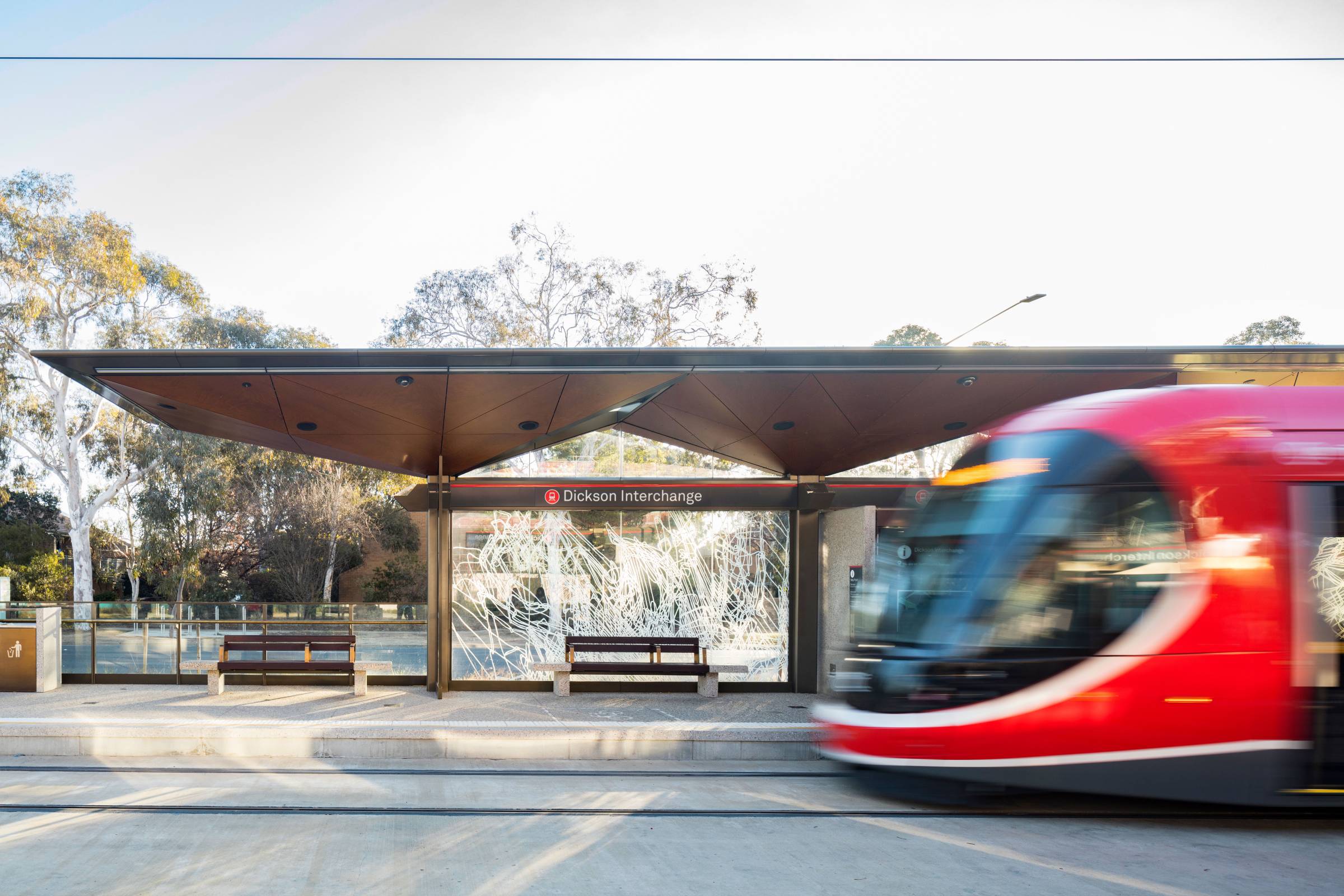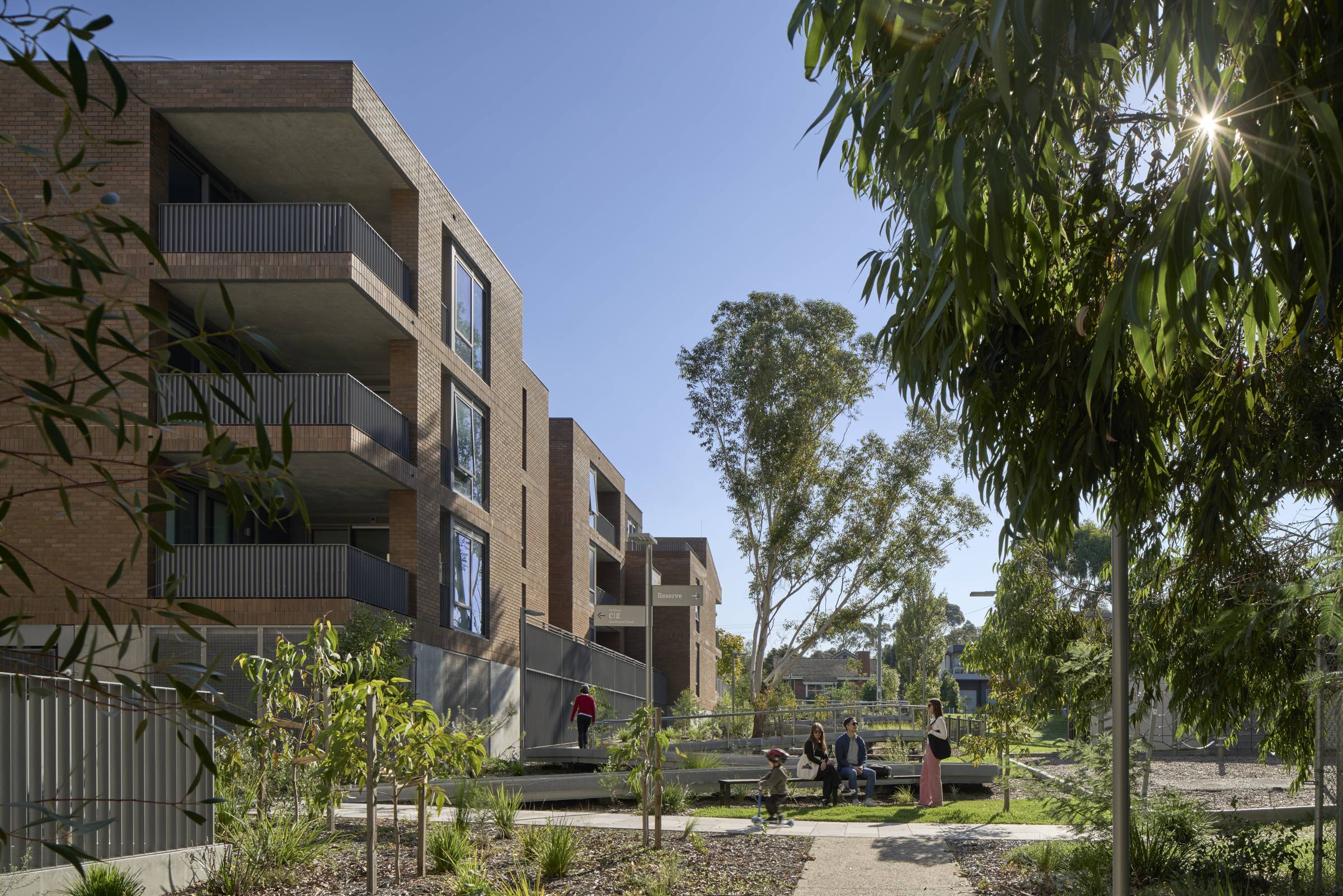
Q & Architecture: The importance and joy of railway design
Senior Associate Mena Kubba shares insights into the importance of rail design on our cities and regions and the people who inhabit them.
You have recently begun working on Stage 1 of the Suburban Rail Loop, leading the Line Wide component of Victoria’s largest ever rail project. Can you talk about how this new infrastructure will benefit Victorians?
As designers, we’re always talking about ‘city-shaping’ projects, and this truly is one of them. For the first time, the middle suburbs will be connected to one another and will also be made accessible by the wider precincts, and the precincts will be connected to Melbourne in a way they haven’t been before. So, the precincts will have an exciting injection and opportunity to develop into areas of greater significance. This is a wonderful thing for Victoria.
The line-wide aspect is a great challenge because it is all about how the different stations relate to each other, holistically, through shared architectural language. We need to find ways to have each station reflect its specific locality, while also being unified to the whole line – what we are really striving for is to create a ‘family of stations’ that are instantly recognisable and become cherished as part of Melbourne’s identity, much like the London Underground or Paris Metro.
With technology advancing so rapidly, what do you predict railway design of the future will look like?
Trains and fleets are getting faster and becoming more efficient. We are getting better, newer, higher-tech machines that will get us to where we need to go as quickly and safely as possible. As architects, it’s our job to respond to this rapidly advancing technology in the station design.
We look at the full picture. Our design process is not limited to the physical station, it extends to the whole thought process involving the users and asks the question ‘where does the journey start from and where does it end?’ We endeavour to make it as efficient as possible for them and think about how people get to the stations, and how they are designing their overall journeys. For example, are they Googling their trip as they make their way to the station, looking at real time data to make decisions, so what does that mean for our design? Looking at these details and posing question from the perspective of others is part of our job because this all links into the way the stations will function. We’re thinking in terms of ‘user-centred design’, so the whole journey through the route, thinking about all the possibilities before people have even stepped into the station to ensure we get the pragmatic elements right about how people move through the space as easily as possible.
The sequence of using the spaces within the station is incredibly important, too. We need to know how people want to use the space, both as they navigate their way through the station before they board a train, and do all the things they have to do before they step onto the train – like buying a ticket, using the amenities and picking up a drink from the vending machine, some may choose to use the lifts and some the escalators, all sorts of users have different needs within a station. We respond to the people’s needs with the aim of people moving through the spaces as easily as possible. On the Line Wide project, we must think about what happens on the other end of the journey too as part of the complete experience. It’s about making sure that the ‘family of stations’ are intuitive and easy to navigate so the customers have smooth onward journeys.
By nature, technology advances and changes so quickly. Things get faster, smaller, larger, etcetera. So a big part of our job is to design with the technology that we have to hand, but it’s critical to also have flexibility at the forefront of our minds so that the spaces can adapt when they are required to when things do change over time. There are all sorts of things that are going to happen that we can’t predict at this point, but it’s critical that we are aware that changes will happen, that they are inevitable.
You are very experienced at designing well-known, large-scale rail projects. What do you think are the key responsibilities of railway station designers?
Personally, I find designing large-scale projects – for example Melbourne Metro – that will impact millions of people provide a rare and cherished opportunity to make a mark on a city, or regional areas. It’s a chance to create marvellous spaces, obviously with a focus on safety and enjoyment, that can elevate people’s daily experiences or those who visit these superb buildings just once.
The wonderful thing about them is how much work goes in by so many people, not just the architects. It takes an enormous group of people and a long time to create first the vision and then the reality of these projects. From the people who think up these projects, those who champion for them and get them through initial reference design stage and to those who come up with concepts and having all the stages approved to reach the point where people can start building. Seeing the digging begin is always exciting. It’s an amazing achievement even to reach the construction phase, and the end result – the stations and all the lines that connect them – become a part of our lives and landscape for a long time, so they must be designed and built to the highest possible standard.
In a more fundamental sense, the spaces come to hold meaning in the users’ lives: children grow up and people grow old using the system as a regular part of their daily routine. We aim to enhance their experience of moving through the space; to elevate their journey with the details we select; and hopefully, create something that is memorable and make a difference in their lives, because the spaces we move through routinely do become a part of us in some way. Much more than being a part of the transition from A-B, these spaces can hold precious keys to our memories and associations of significant moments in our lives. It’s always a pleasure to have a positive impact on people’s lives through design.
On a personal note, I am very passionate about – and heavily involved in championing women’s and other vulnerable people’s safety in transient spaces, which train stations obviously are. Data shows that it’s not uncommon for people to have trouble in these spaces, so I consider factors into the overall design that omits opportunity for danger and create the best spaces that go beyond the minimum requirements.
Railways are instrumental in moving people not just around cities but also to and around regional areas. What are the key considerations that rail designers need to factor in?
This is a question that applies to me personally, having recently moved out of Melbourne to a regional town, so will be using the regional rail as a part of my life. The Government is making railway upgrades a priority, which is really encouraging because creating a work/life balance has possibly never been more achievable. It’s now very possible to work in the city and have access to all the city offers, while raising children in the country, or living in a regional town and enjoying a more peaceful life, if that’s what you’d like to do.
I think that development investments in the regional areas are as important as the cities. Especially for commuters, because there’s a correlation between a smooth commute and happiness levels. So as a designer of these spaces, there’s a sense of duty to ensuring that the spaces are efficient and pleasant to be in. Also, the train line is the backbone to the surrounding infrastructure, so it connects different towns and regions playing a crucial role in boosting the economy and cultural events in regional areas. And high-quality design is imperative to that success. Faster trains, and better lines and stations all play a very real part in improving lives of people in a very wide area. This is never far from the mind of a rail designer.


